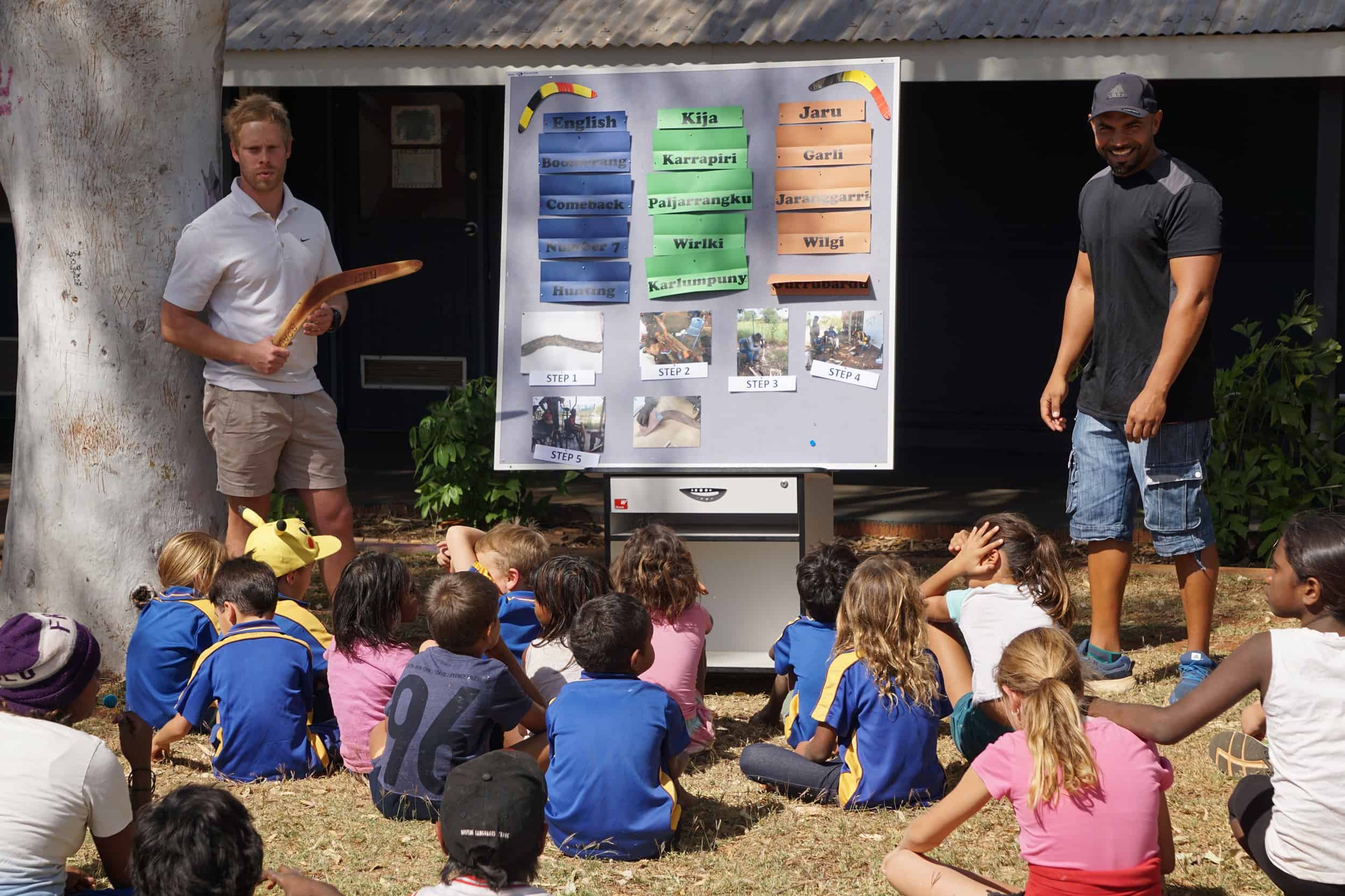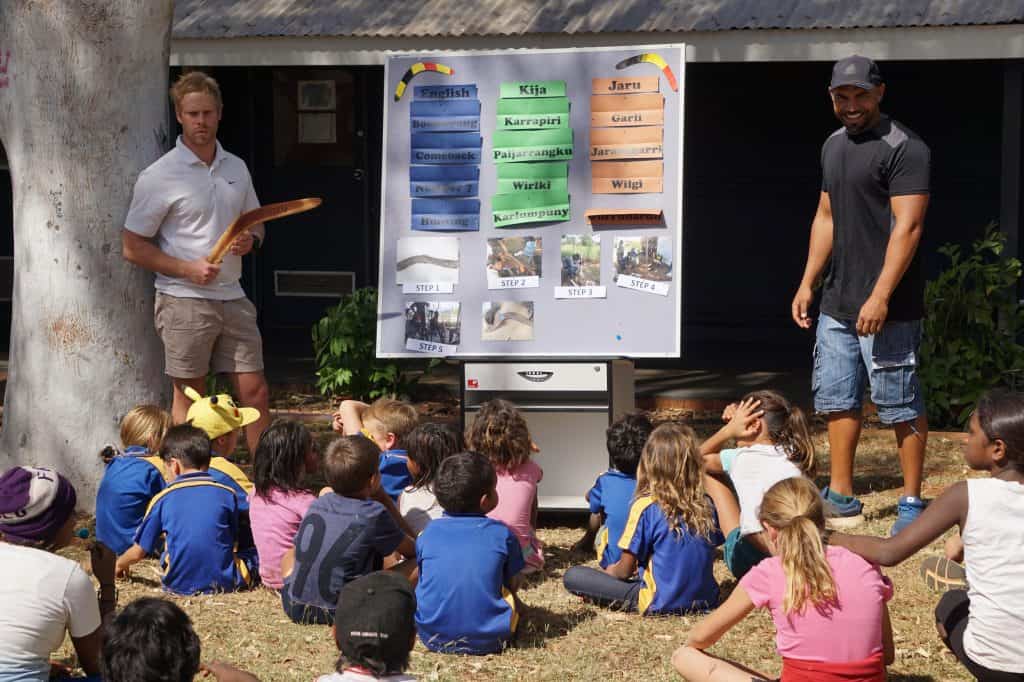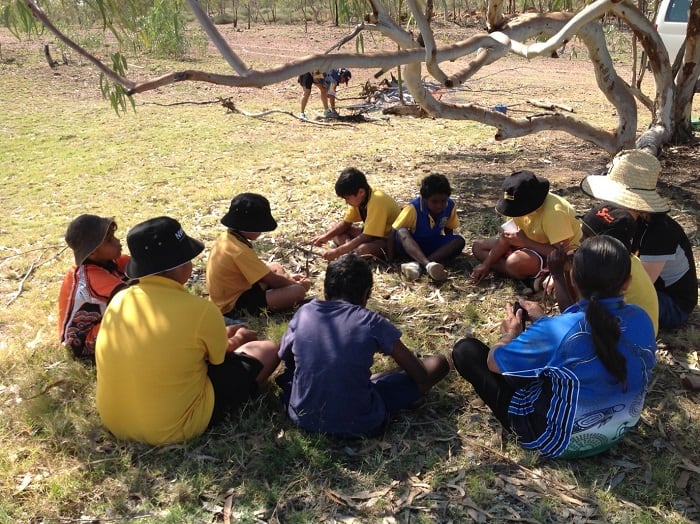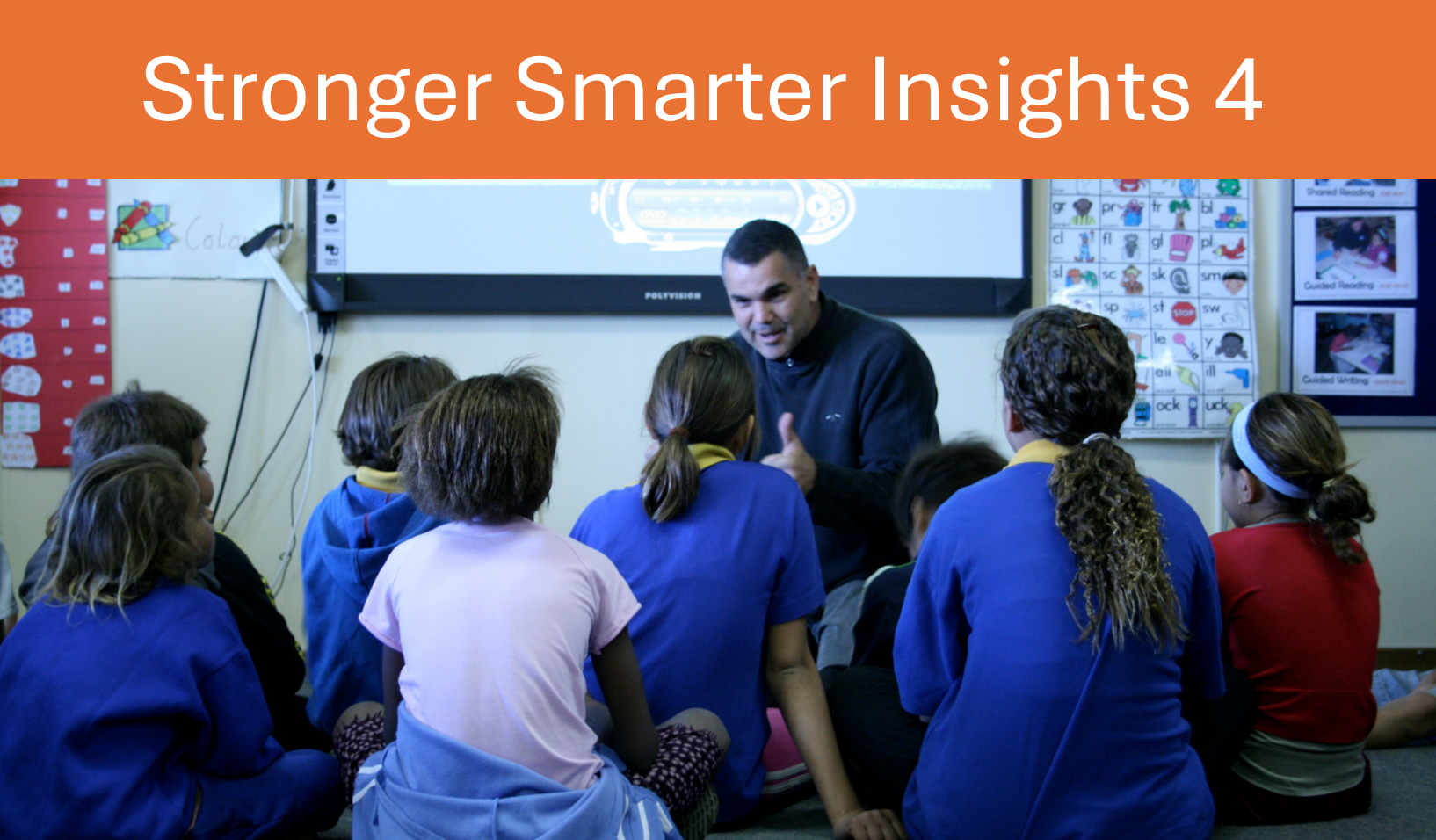
A sense of belonging in the classroom

Halls Creek District High School
Student engagement is one of the three areas for strategic action in the eighth Overcoming Indigenous Disadvantage (OID) report released in 2020. A key aspect of engagement is students’ sense of belonging in the classroom.
The OID report describes how this is particularly important for Aboriginal and Torres Strait Islander students. Data from the 2015 PISA survey shows that Aboriginal and Torres Strait Islander students are less likely than their non-Indigenous peers to feel a sense of belonging in school. Less than two-thirds of Aboriginal and Torres Strait Islander students agreed with the statement ’I feel like I belong at school’ (OID, figure 7.2.1, p.7.14).
Strong and Smart
One of the cornerstones of the Stronger Smarter Approach (SSA) is the concept of ‘Strong and Smart’, which is designed to ensure that Aboriginal and Torres Strait Islander students do feel they belong in the classroom and can succeed in school. ‘Strong in culture and Smart in the classroom’ is a simple message. However, we recognise that achieving this is complex. There is no one recipe or formula.
The OID report recognises that factors impacting on a sense of belonging include the relationship the student has with their teacher (p.7.11, 7.15). Strong and Smart is about teachers recognising their own role in building relationships with students and families. Only then can teachers understand the strategies that will work best in their local context.
Across the country, educators who have taken this onboard report how building relationships and recognising and valuing Aboriginal and Torres Strait Islander culture and knowledge in the classroom can increase student engagement and belonging.
Yarning Circles
Yarning Circles are one tool that many teachers bring into the classroom from the Stronger Smarter programs to build relationships. A Yarning Circle is based on Indigenous ways of communicating that promote deep listening. A Yarning Circle can be used as a quick check-in with students, to discuss in-depth issues, or as a tool to calm the class down if things are getting out of control.
At Normanton’s Gulf Christian College in Queensland’s Gulf Country, staff report that Yarning Circles have helped them learn more about students and empower every student to have a voice. For the Prep students who always have stories to share on a Monday morning, the Yarning Circle teaches them to take turns and listen. The students sit on a big yarning circle mat where the symbol in the middle represents the campfire. Prep teacher, Cynthia Thomas, told us that the students respect the rules of the Yarning Circle and keep each other in check. “If one child starts to move out of the circle into the middle, the other kids will shout ‘stop, you’ll get burnt’,” she says.
Bringing the school to the parents
Research has found that the relationships the school has with parents and community can improve student engagement (OID, p.7.15). Community Elders can play an important role by providing cultural knowledge to non-Indigenous teachers and facilitating understanding between all teachers, students and their families (p.7.16).
In the SSA, we recognise that in some communities, the parents of current students may have had a negative experience with school themselves which has undermined their sense of value of schooling. The SSA is about exploring what the school can do to support families to build a great trust and confidence in the school
Halls Creek District High School in the Kimberley has taken steps to make sure their school is seen by the local community as a place that values and supports their children. Former Assistant Principal, Jake Petterwood, told us that if a child is not in school, they take the time to go outside the school gate and talk to parents. Other strategies reported by schools to build trust with parents include taking school events out into the community, talking to parents at the school gate every day, and making sure they send positive messages home.
Embedding Indigenous perspectives
At Mount Isa in Queensland, Auntie Joan Marshall worked with school staff to run a Stronger Smarter program for disengaged students across six schools2. In the program, they take students out on country to learn about the local Kalkadoon culture. Auntie Joan told us, “because of the days when we shifted off stations, the kids today don’t know our culture. So, this is bringing their identity back and their tribes and where they fit in with people.”
At Warrnambool Primary School in southern Victoria, Principal Peter Auchettl told us the school made the decision to embed the local Gunditjmara culture across the curriculum for all students. With strong support from the local community, this approach has been very successful. Peter explained, “We don’t treat the Indigenous kids any differently, but they do get to share their culture and learn their culture with everyone else in the class.”
Feeling sparkly inside

The best evidence of the success of these approaches comes from the voices of the students. In Warrnambool Primary School’s Stronger Smarter video, a student says, “Stronger Smarter makes me feel proud because people know my culture”. At Gulf Christian College, staff reported improved student engagement.
At Mount Isa, Auntie Joan talks about how proud she feels when she sees the difference in the students when they are out on country. One of these students sums it all up it up when he describes how he feels ‘all yellow and sparkly inside” because he loves learning about his culture.”


